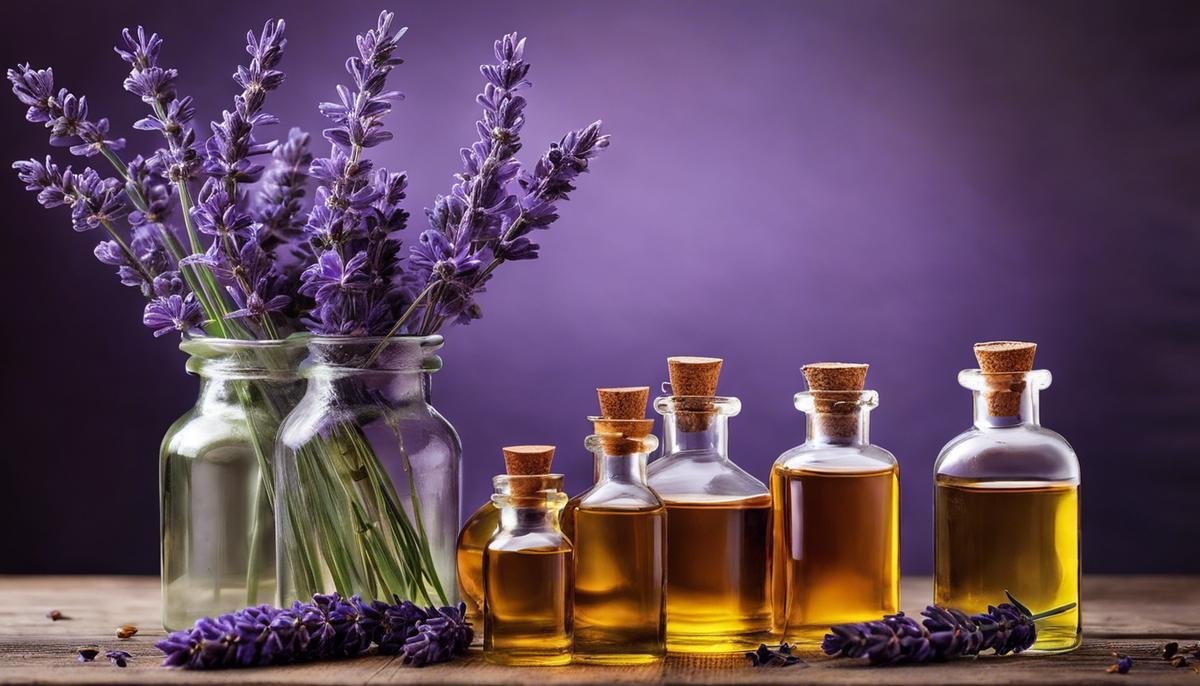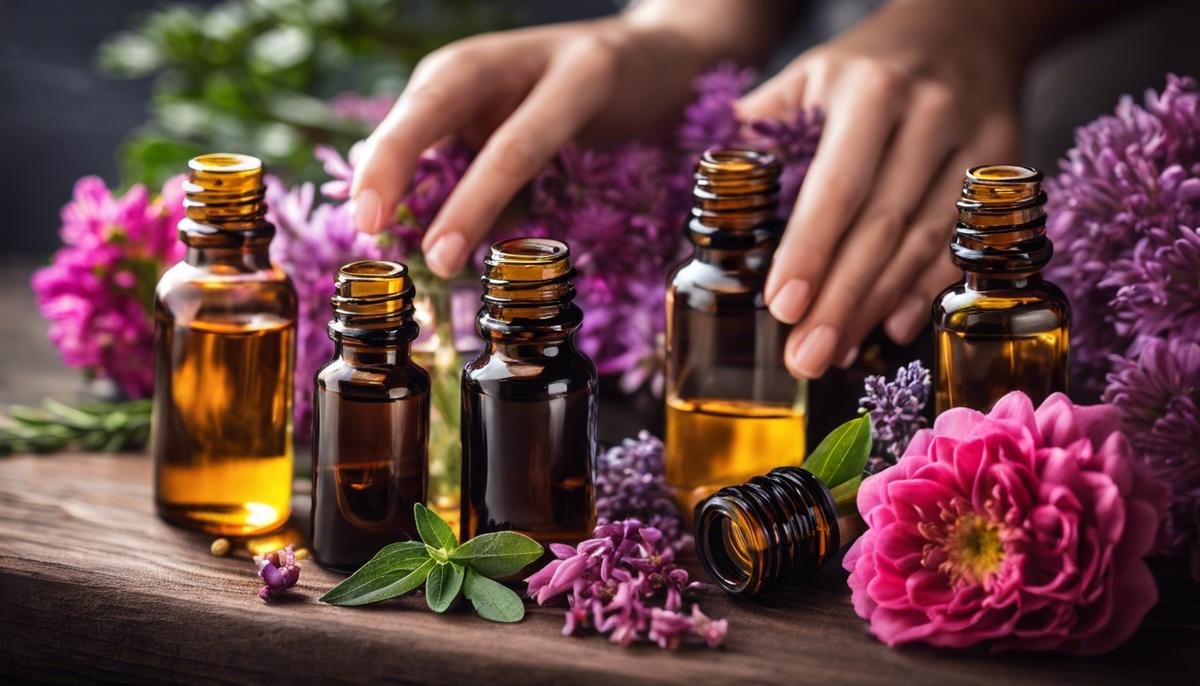
The intriguing essence of aromatherapy has captivated the senses and curiosities of individuals for generations, harmonizing the ethereal world of scents with the tangible benefits for body and mind. With its roots steeped in ancient traditions, this form of alternative therapy has evolved to embrace a multitude of uses, one of which includes offering a supportive hand to those on the autism spectrum. As we embark on a journey through the aromatic terrain, we aim to dissect the principles of aromatherapy, unveiling its intricate connection to our well-being, and illuminating its particular affinity for enhancing the quality of life for individuals with autism. The intricate dance of molecules within essential oils holds the potential to soothe, stimulate, and balance, crafting a symphony of sensory experiences tailor-made for those with unique sensory needs. Our exploration will tread with care into the world of fragrances, aiming to shed light on the gentle power of aromatherapy and its place in fostering positive, supportive environments.
Understanding Aromatherapy and Its Principles
Soothing Scents: Unraveling the Magic of Aromatherapy in the Comfort of Home
Hey there, fellow family-focused folks!
Ever stumbled upon a scent that instantly whisked you away to a peaceful memory or made you feel like you’ve been wrapped in a cozy blanket of tranquility? That’s the subtle, yet profound, power of aromatherapy. It turns out, those lovely wafts aren’t just pleasant — they’re also potent tools for promoting wellness in our bustling family lives.
So, what is this fragrant form of wizardry? In a nutshell, aromatherapy is a holistic healing treatment that uses natural plant extracts to promote health and well-being. Basically, it’s like a spa session for your senses that you can indulge in without stepping out of the house.
At the heart of this practice are essential oils, the highly concentrated plant extracts that serve as the foundation of aromatherapy. These oils are the VIPs that deliver the beneficial properties of plants directly to us, often through the sense of smell and skin absorption.
When those gorgeous little molecules from essential oils travel to the nose and are inhaled, they interact with the olfactory system — that’s the part of the brain connected to smell. From there, they affect the limbic system, which plays a role in emotions, behaviors, sense of smell, and long-term memory (hello, nostalgia!). More than just a feel-good experience, this interaction can have real physical benefits, helping to ease stress, lift moods, and potentially improve sleep, which every parent knows is more precious than gold.
Additionally, when applied topically – always with a carrier oil to avoid irritation, please – essential oils can be absorbed through the skin. Massaging these oils onto the body not just helps in relaxation but also allows the therapeutic properties of the oils to work their way through the body, supporting various systems such as the circulatory and muscular systems.
While diving into the world of essential oils, it’s important to remember to choose high-quality, pure oils, and use them responsibly — a little goes a long way! Always do a patch test, keep them away from the tiny curious hands of kiddos, and pets, and consult with a healthcare provider before use, especially when pregnant or dealing with specific health conditions.
Our homes are the heart of family life, and incorporating the serenity of aromatherapy can help transform them into a sanctuary of tranquility amidst the everyday chaos. Whether it’s through diffusing a calming lavender scent at bedtime, spritzing a citrus blend to invigorate the living space, or enjoying a eucalyptus-scented bath to unwind after a long day, the possibilities are boundlessly delightful.
Now, isn’t it wonderful when wellness can be as simple as taking a deep breath? Embrace the scent-sational world of aromatherapy and watch as it gently elevates daily life, sprinkling bits of peace and rejuvenation over our bustling home environments. Ah, the smell of harmony in the air!

Benefits of Aromatherapy for Individuals with Autism
When families embark on the journey of integrating aromatherapy into a home that’s enriched with the presence of a loved one with autism, they often discover a treasure trove of subtle yet impactful ways to foster a more harmonious environment. Within the context of autism, sensory experiences can be both profoundly influencing and intensely felt, making the judicious use of aromatherapy a potential avenue for positive sensory engagement and comfort.
How, then, can aromatherapy shape the day-to-day lives of those with autism? Let’s dive into some tailored strategies and insights that can introduce a breath of fresh air, quite literally, into daily routines and care practices.
First off, the sense of smell can be a gateway to either tranquility or distress for individuals with autism; thus, knowing one’s personal scent preferences and aversions is key. Gentle, soothing scents like lavender or chamomile might help in cultivating a calm bedtime atmosphere, especially when used in a diffuser during pre-sleep routines. The continuity of scent can become a signal for the body and mind to prepare for rest, and over time, it may assist in easing the transition to sleep.
Likewise, during moments of heightened stress or sensory overload, a whiff of a grounding, familiar scent carried on a personal inhaler or applied to a comforting piece of fabric can serve as an olfactory anchor, providing a momentary safe haven from sensory chaos. Portable options like these allow for a quick and discreet way to access the calming benefits of essential oils, even when on the go.
Moreover, aromatherapy can be thoughtfully included in learning or therapy sessions. Since focus and concentration can vary widely among individuals with autism, using stimulating scents such as citrus or peppermint during activities demanding attention can create a more conducive setting for engagement and learning. The refreshing burst of scent can subtly cue the brain to maintain focus on the task at hand.
It’s also worth considering how the use of specific essential oils in conjunction with other therapies, like a sensory integration therapy or occupational therapy, may enhance the overall therapeutic experience. A scent that’s associated with a positive, comforting session could be used to re-establish that sense of well-being in other contexts, providing a bridge of familiarity and comfort between therapy and everyday life.
For families and caregivers, it’s essential to keep in mind that less is often more. Since individuals with autism can be sensitive to strong stimuli, essential oils should be introduced slowly and in diluted forms. Patch testing for skin sensitivities and preference assessments are prudent steps to ensure the safety and enjoyment of aromatherapy practices.
Ultimately, the beauty of integrating aromatherapy into the life of someone with autism lies in its adaptability. Each person’s aromatic journey is unique, with preferences and responses to scents guiding the way. By observing, honoring, and harnessing the individualized reactions to specific aromas, families can craft a sensory-friendly home atmosphere infused with comfort and tailored well-being.
As aromatherapy gently weaves itself into the fabric of daily life, its silent yet potent presence can become a nurturing force, supporting the exquisite individuality and sensory world of a loved one with autism.

Choosing the Right Essential Oils for Autism
When considering which essential oils might be the most beneficial for individuals with autism, understanding unique sensory needs is key. Every individual is different, and while some may find certain aromas soothing, others might perceive the same scent as overwhelming. Therefore, it’s essential to tailor the selection to personal preferences, taking the time to experiment with various oils to discover which ones provide comfort and positive sensory input.
For starters, essential oils such as lavender and chamomile are renowned for their relaxing properties. Often recommended to aid with sleep and reduce anxiety, these gentle scents can be a good initial choice for creating a calming environment. Additionally, these oils are widely accessible and can seamlessly be introduced into a bedtime routine through a diffuser or a dab on a pillowcase.
To address moments of stress or sensory overload, grounding scents such as vetiver and sandalwood are worth exploring. These scents are known for their centering effect and may assist in pulling focus back to the present when feelings of being scattered or overwhelmed arise.
For more active periods or when promoting focus during learning or therapy sessions, one may consider citrus-based oils like bergamot or mandarin. These can invigorate the senses and may enhance concentration. However, it is important to be cautious with citrus oils, as they can be more potent and might not be suitable for all, especially when direct skin contact is involved.
Frankincense is another oil that has been credited with instilling a sense of peace and relaxation. This versatile oil can be used during therapeutic practices and may aid in the overall emotional well-being of individuals with autism. Frankincense’s woody aroma tends to be mild and not overpowering, making it a good candidate for anyone just starting out with aromatherapy.
When introducing essential oils to individuals with autism, it’s best to begin with diluted forms. A diffuser can release a gentle mist of the essential oil, dispersing the scent lightly throughout the space. Another safe method is adding a few drops of essential oil to a carrier oil like coconut or jojoba oil before applying to the skin. This method dilutes the essential oil and minimizes the risk of skin irritation.
It’s also recommended to provide options and let individuals with autism have a say in which scents they wish to incorporate into their environment. This not only ensures that the aromatherapy practice is pleasant for them, but it also offers an opportunity for them to exert control over their sensory experiences, which can be empowering.
In essence, striking a balance is crucial when using aromatherapy as a supportive tool for individuals with autism. By observing reactions to various essential oils and adjusting selections to match personal preferences and tolerance levels, one can create a sensory-friendly atmosphere that nurtures and supports. It’s a journey of discovery, filled with the warmth of nature’s gifts and the joy of finding what truly resonates with each unique individual.

How to Introduce Aromatherapy in the Home Environment
Whether you’re a seasoned homemaker or new to the family lifestyle game, one thing is for sure: we all want a home that radiates comfort and calm. Aromatherapy can play a key role in crafting an environment that nurtures the well-being of all family members. After covering the basics of essential oils and tailoring aromatherapy to individuals with autism, it’s time to dive deeper and explore more strategies for seamlessly weaving this ancient practice into the fabric of daily life at home.
A pivotal strategy focuses on establishing daily routines that incorporate aromatherapy. Rituals such as adding a few drops of eucalyptus oil to the morning shower can create a refreshing start to the day. Consider setting up a diffuser to release a stimulating peppermint scent during homework or telecommuting hours. This helps to boost concentration and ward off midday fatigue.
A crafty tip for those with a DIY spirit is creating homemade, eco-friendly cleaning products. Mix natural ingredients like vinegar or baking soda with essential oils such as lemon or tea tree for a non-toxic household cleaner that leaves your home sparkling and smelling fresh.
For the little ones, consider incorporating aromatherapy into playtime. Add calming scents to playdough or mix a lavender spray to use on stuffed animals for snuggle time. This not only makes for a tranquil play environment but also helps children associate those scents with safety and relaxation.
Creative aromatherapy can extend to the kitchen, too. Simmer a pot of water with cinnamon and orange peels while cooking to neutralize food odors and infuse the home with a warm, welcoming aroma. It’s an age-old trick that beckons everyone to the heart of the home with its inviting scent.
Seasonal changes offer an excellent opportunity to rotate essential oils used at home. Embrace the fall with clove and ginger scents or summer with light floral and citrus tones to harmonize with nature’s rhythm. This keeps the sensory experience at home fresh and aligned with the time of year.
Incorporating aromatherapy into family traditions is yet another fabulous method. Use frankincense and myrrh during meditative practices or pine and cedarwood during holiday gatherings. This not only creates a serene space but also instills lasting aromatic memories tied to family occasions.
Lastly, don’t overlook the need for an olfactory oasis within your personal retreat—the bedroom. A pillow mist of chamomile and clary sage can set the stage for restful sleep, augmenting standard bedtime routines.
Remember, integrating aromatherapy into your home is not about extravagance; it’s about making small, thoughtful adjustments that contribute to a harmonious and healthful living space. It’s about embracing the natural world and inviting its distilled essences into daily life to support each family member’s journey towards well-being. Whether through the joys of crafting homemade goodies or the simple act of adding a few drops of oil to a diffuser, each step is a stride towards a more peaceful and fragrant home.

Potential Challenges and Considerations
Embracing Aromatherapy: Considerations for a Happy, Healthy Home
Aromatherapy’s allure is undeniable, with fragrance’s profound ability to elevate the mood of a room or soothe a restless mind. Yet, when introducing essential oils into a family setting, mindfulness is key. Let’s navigate some considerations to ensure everyone’s well-being while reaping the aromatic rewards.
Firstly, safety takes the front seat. Keep essential oils out of reach of children and pets – these potent liquids are not to be underestimated. Ingestion could lead to serious health issues, and even skin contact might cause reactions in those with sensitivities.
Speaking of sensitive individuals, some family members may have allergies or adverse reactions to specific oils. Always conduct a patch test before widespread use – a drop of diluted oil on a small skin area can speak volumes about compatibility. If diffusing oils, observe everyone’s response closely and act swiftly at the first sign of discomfort.
Pregnancy brings about its own set of rules. Certain oils are recommended to avoid during this delicate time, such as sage and rosemary, which can cause contractions. Always consult a healthcare provider before embarking on an aromatherapeutic journey during pregnancy.
Concentration is another factor. Less is more stands true with essential oils. An overpowering scent might have the opposite effect of what is intended, causing headaches or overwhelming the senses instead of soothing them. Start with a few drops in a diffuser and let the aroma gently fill the space.
And when it comes to the furry family members, research is vital. Animals process scents differently, and an oil that’s a hit with humans might not sit well with a four-legged friend. For example, peppermint and tea tree oil are often no-gos for pets. Always ensure there is ventilation for pets to escape overwhelming smells.
Finally, store your oils correctly. Essential oils can degrade if exposed to light or heat, losing their therapeutic properties. Dark, cool spots in sturdy containers are their allies in longevity, ensuring that each drop contributes to family well-being just as intended.
By thoughtfully weaving aromatherapy into family life, balance between nature’s potent gifts and the comfort of loved ones is struck. It’s a journey of scents with a heartwarming destination – a sanctuary of peace, joy, and health.

Personal Stories and Testimonials
Diving Deeper: Aromatherapy for Autism and Family Dynamics
When it comes to our kin, every little factor counts towards crafting an enriching and well-balanced family life, especially for families with members on the autism spectrum. Venturing into the wellness realm, many have looked at aromatherapy not just as a personal indulgence but as a potential way to foster comfort and connection among all family members. Given that each individual with autism has unique needs and sensitivities, here’s how other families are navigating the scented waters of essential oils.
Community forums and support groups are often awash with testimonials from parents seeing improvements in behavior and anxiety levels when introducing aromatherapy at home. Although not a replacement for traditional therapies, many have noted how essential oils serve as a complementary addition to the toolbox of strategies used to support their loved ones with autism. Observing their child’s or sibling’s responses to various scents has become an exercise in understanding and communication.
One family, for example, recounted the remarkable calmness that enveloped their household when diffusing a custom blend of essential oils known for their soothing properties during homework time. This not only benefited their child with autism but also created a relaxed atmosphere conducive to focus for the entire family unit.
Another narrative highlighted the dynamic nature of aromatherapy as a sensory tool. By aligning the diffusion of certain essential oils with the time of day—peppermint in the morning for an energizing start, and cedarwood in the evening for grounding—some have managed to subtly entwine these olfactory cues into the daily rhythm, providing a comforting and predictable structure.
Beyond the calming and focusing effects, savvy households are harnessing the power of aromatherapy to tackle the challenges presented by sensory processing differences. For instance, one family shared their initiative of starting a “scent garden” together, allowing their child with autism to experiment and choose the flowers and herbs that resonate positively with them. This approach not only provides agency and stewardship in aromatherapy practices but also fosters an inclusive hobby that everyone in the household can enjoy.
However, it’s not all rosy and straightforward. Challenges do arise, particularly in honing in on which scents are well tolerated. Some families have learned through trial and perhaps a touch of error, about the importance of introducing new essential oils one at a time and in minute quantities to ensure they don’t become overwhelming. Moreover, integrating feedback from their loved ones with autism becomes pivotal to refining and perfecting their scent selections.
As with any family dynamic, the key lies in fostering open communication and thoughtful observation. Aromatherapy for autism is definitely not a one-size-fits-all solution, but the anecdotes circulating through the parenting network suggest a hopeful trend—one rooted in patience, experimentation, and the heartfelt desire to discover new ways to support our beloved family members in living their best and most aromatic lives.

Embarking on the aromatic journey with aromatherapy as a companion for those with autism is akin to navigating a garden rich with healing herbs and invigorating blooms. We have wandered through the scented pathways, inhaling knowledge about the essence of such therapies and the profound impact they can have on the autism spectrum. From the delicate art of selecting the right essential oil to creating a serene haven within the home, the potential for transformation through scent is both vast and personal. While acknowledging the variances in individual responses and the need for mindful application, we have seen through shared stories the transformative potential that these natural essences hold. As fragrances continue to diffuse through the lives of families, it becomes apparent that, with compassion, respect, and scientific curiosity, aromatherapy may indeed hold keys to unlocking realms of calm and focus for those with autism, one soothing scent at a time.




